The people who make Durga Puja happen behind the scenes
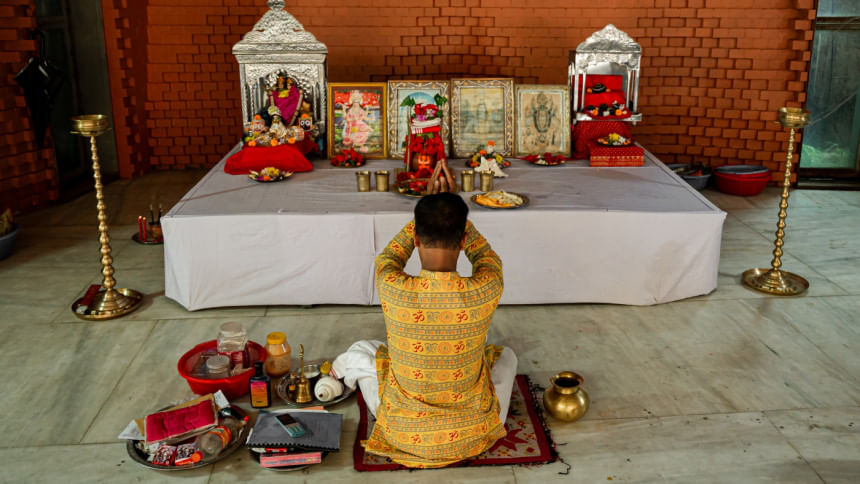
The grandeur of Durga Puja unfolds before the public eye with dazzling lights, rhythmic chants, and lines of devotees dressed in their finest. However, well before the first dhak is struck or the first flower is offered, the festival begins quietly – offstage, in alleyways and courtyards, where those who remain unnamed put it all together. Their work does not make it to the television screens. Their voices don't reach the podium. But their labour shapes the very body, breath, and soul of the celebration.
Take the dhakis, for example. "We're only three of us this year," one of them, wishing to remain anonymous, says. "But we'll make sure the sound feels like thirty."
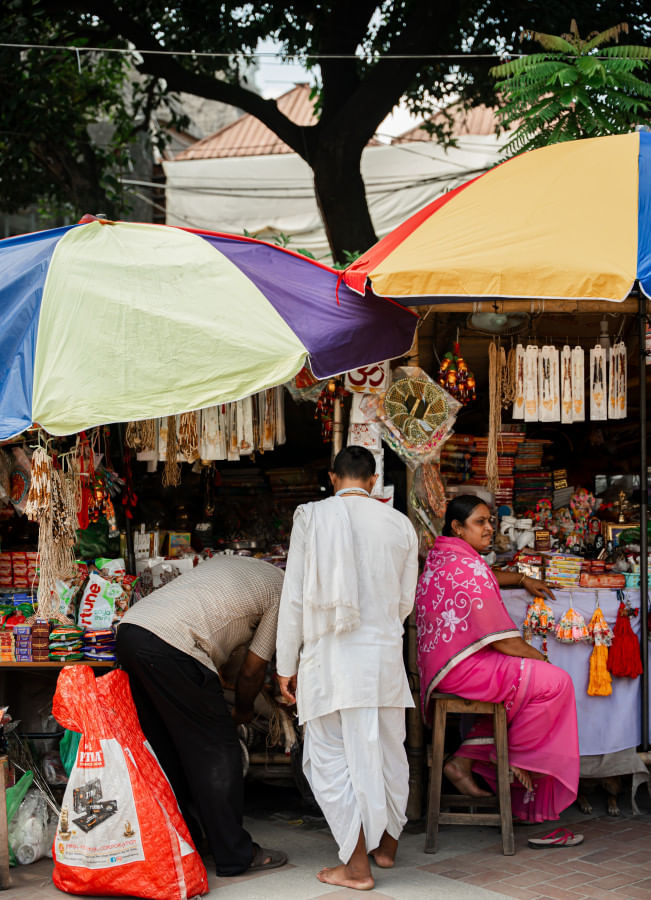
For a dhaki, the drumbeat is not just music — it is a call to the goddess. Their rhythm marks the shifting energy of each ritual: slow and reverent during the morning offerings, thunderous and urgent during Sandhi Puja. "We don't just play," he adds, "We speak to Ma Durga through the beat. She listens in silence. We answer in sound."
Unlike other performers, the dhakis are not part of the formal priestly circle. They sleep on mats nearby, eat whatever is offered, and play until their arms cramp. But ask them why they do it, and they will say what their fathers said before them: "It is our dharma. This is how we serve."
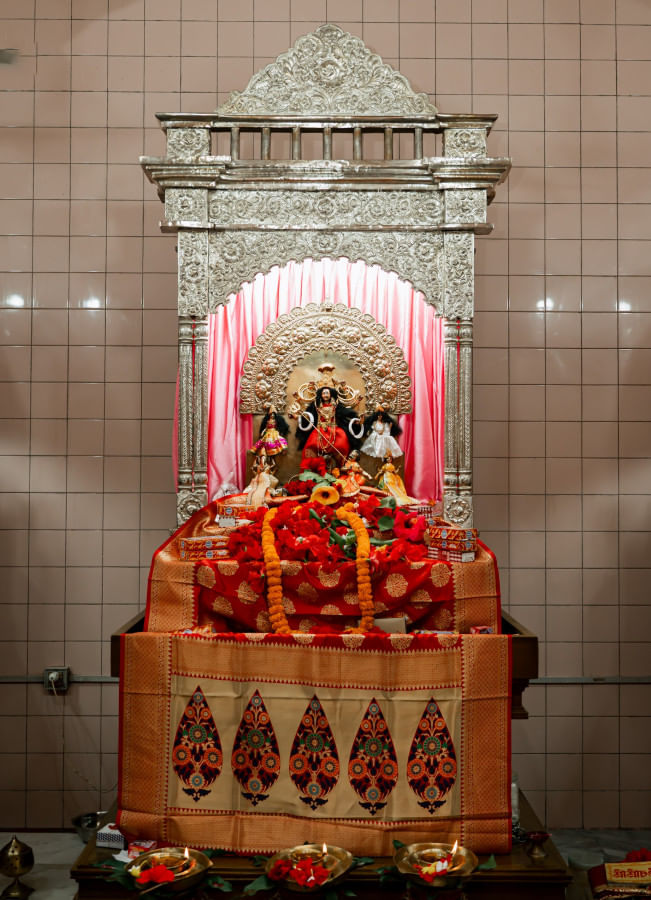
Along the footpath beside the temple, incense sticks lean in bunches against baskets of flowers. Their sellers work in dust and sunlight from dawn till midnight. "This week is our only hope," the seller shrugs, gesturing to the sticks. "After this, sales go back to almost nothing."
For vendors like her, Durga Puja is a miracle and a lifeline. Their profits are not massive, but the rush of customers and the shared joy in the air make it worth the long days. "Sometimes people don't even buy. They just come, ask the price, smile, and leave," he says. "I don't mind. Everyone has a right to feel festive."
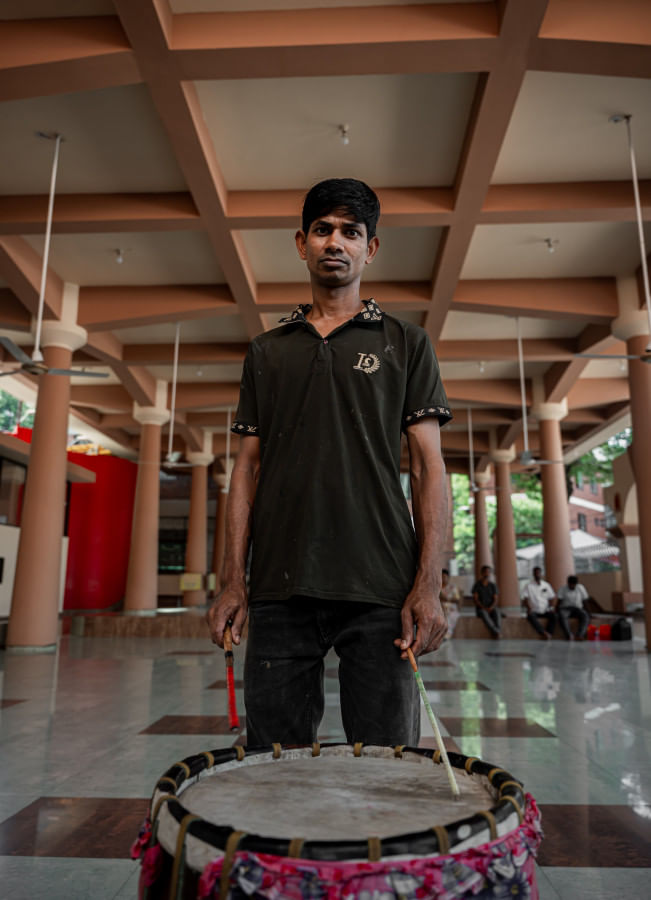
She picks up a packet of incense, its label smudged. "Last year, this cost Tk 180. This year, it's still the same, but they've made it smaller. We all adjust."
And then, there are those whose hands have shaped the goddess herself, working silently for months in scattered corners of the city. The clay that binds her limbs, the straw that forms her spine, the paints that turn her gaze alive – all of it comes together through rituals older than memory.
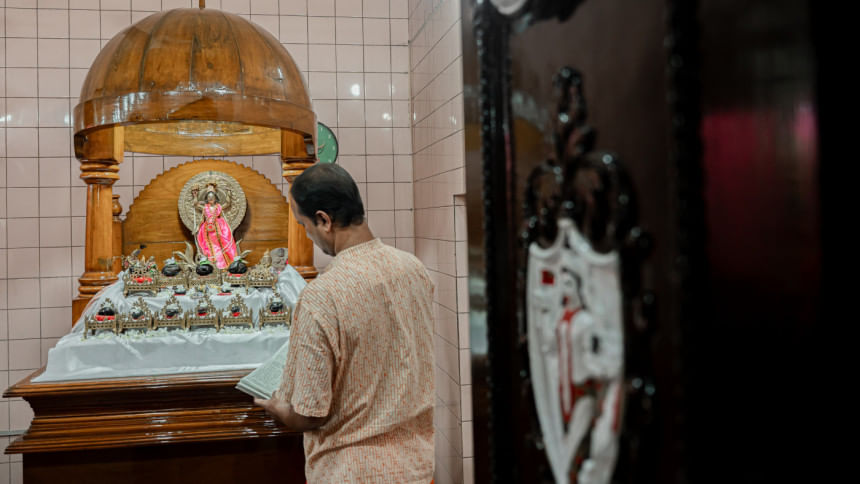
No plaque or banner declares who built the idol. Their names are not announced when the crowd bows in reverence. Their presence lingers only in the way her fingers are shaped, the calm curve of her smile, the stance of her lion mid-roar. And once the celebrations are over, their work dissolves into the river.
These are the people who don't wear new clothes for the festival. They often miss the main moments of worship, busy adjusting lights, sweeping corners or fixing a fallen garland. But their devotion is different – it's built into the scaffolding, woven into the scent, beating beneath the drums. Without them, the goddess may still arrive, but she would be voiceless, formless, incomplete.
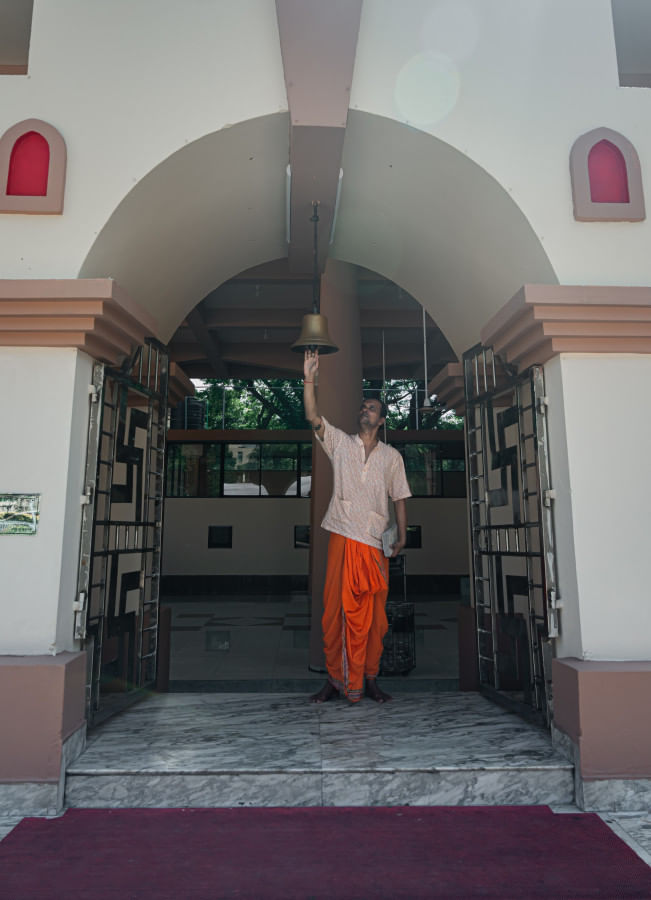
Durga Puja, in all its public glory, rests on invisible shoulders. It is held up not just by priests and organisers, but by those who do not ask to be seen. And perhaps that is the purest form of worship — to give, not for reward or recognition, but because something inside insists on it.
So, when you walk through the temple gates, drawn by the sound of the dhak or the shimmer of the idol, pause for a moment. Listen beyond the chants. Look behind the curtain. That's where the festival truly lives.

 For all latest news, follow The Daily Star's Google News channel.
For all latest news, follow The Daily Star's Google News channel. 

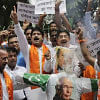


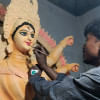
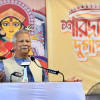

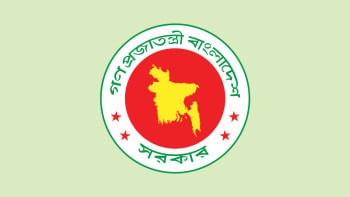
Comments